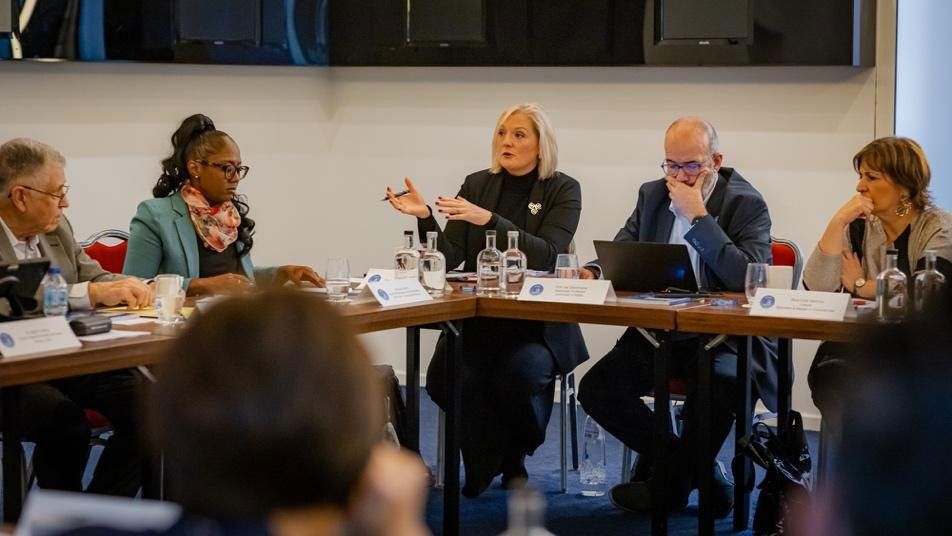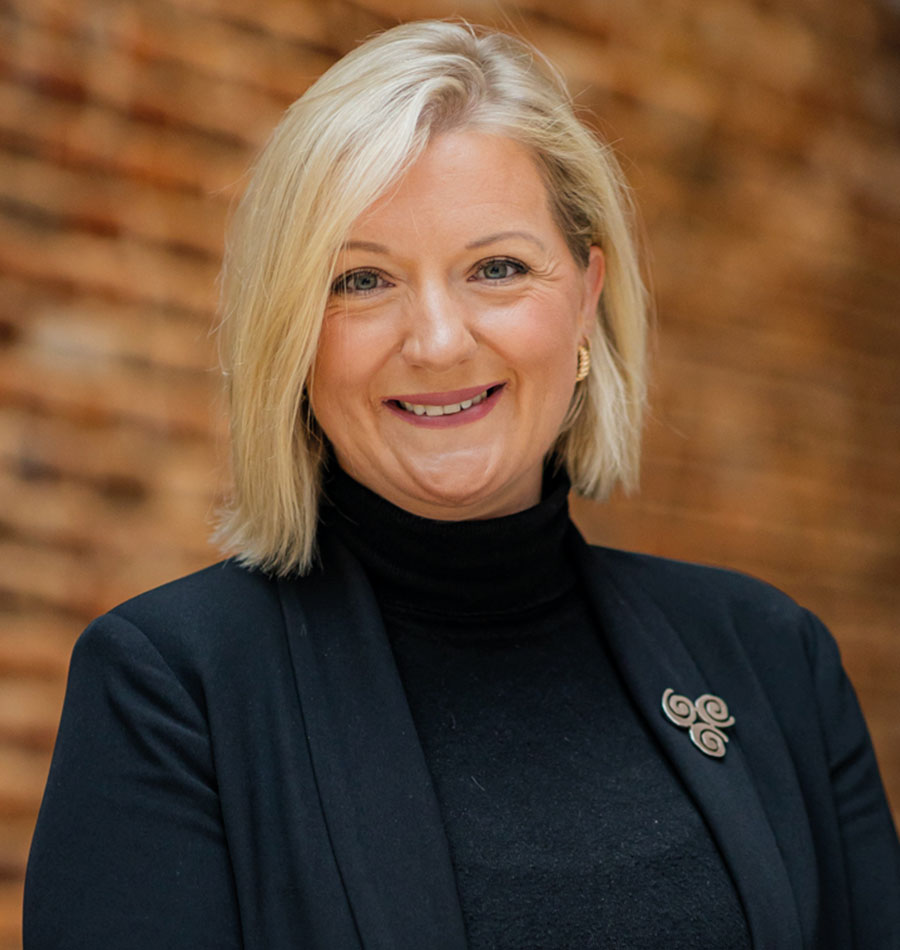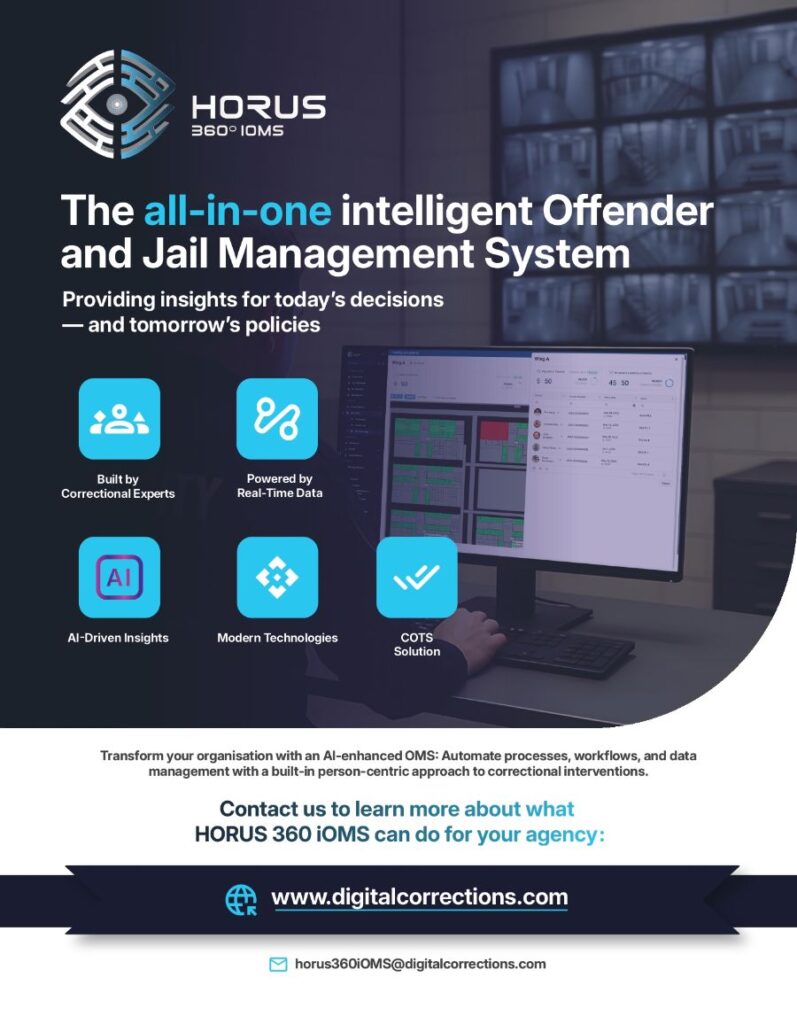Interview
Emma Regan
President of the International Association for Correctional and Forensic Psychology (IACFP)
With over 20 years of experience across forensic mental health and psychology services in prison systems, Dr Emma Regan is the Director of Care and Rehabilitation with the Irish Prison Service and President of the International Association for Correctional and Forensic Psychology (IACFP).
In this interview, Dr Regan shares her views on the future of rehabilitation in correctional settings and the role of psychology in institutional culture and practice. She reflects on current challenges, emerging practices, and why leadership training is essential for psychologists working in correctional settings.
As the new president of the International Association for Correctional and Forensic Psychology (IACFP), how would you describe the strategic focus of the Association moving forward?
ER: This year, we had the opportunity to take stock, look to the future and as a result we have developed a new strategic plan that will guide us from 2025 to 2031. Our strategic plan is built around three pillars, and focuses specifically on the needs of correctional and community corrections psychologists, but also other practitioners working in the field.
The first pillar focuses on “helping the helpers;” those working on the front line with individuals involved in the criminal justice system. Our goal is to ensure they have access to highly relevant, contemporary continuing professional development and that they can share innovative practices and insights internationally.
The second pillar focuses on bridging research and practice. There are excellent academic journals available, but they’re not designed to support people on the ground who are working in prisons and probation services every day. In reality, they take too much time to read, interpret, and apply in practice.
We either need academics to write in a more accessible, practical way for frontline practitioners, or we need to better equip practitioners to understand and apply research findings. Separately, we want to support practitioners to integrate research into their everyday work. This can seem an overwhelming task to busy clinicians but there are smart ways in which data can be captured, outcomes evaluated and articles written, reviewed and shared with the wider correctional community – we want to assist with this.
We hope our IACFP Bulletin will help with this. It’s intentionally not an academic journal. It gives practitioners a space to write short, accessible pieces based on their experiences and creative practice which is shared internationally. We plan to really enhance this area of the journal, and encourage international engagement in relation to ‘what is really working’ in correctional and community correction settings.
Our third pillar is about building IACFP to be a sustainable organisation through our engagement and collaboration with international organisations and associations. We also aim to grow our membership by focusing on providing practitioners with what they need in a very complex and challenging work environment.
From your perspective, what are the main challenges in promoting effective rehabilitation practices on a global scale?
ER: The first challenge, and probably the most obvious, is the sheer number of people impacted by the criminal justice system worldwide and I’m thinking about perpetrators, let alone their families, victims and their families. We are talking about millions of people in custody and community corrections worldwide, and we know how limited and uneven the resources are to meet these needs across jurisdictions.
In Ireland, we are a reasonably well-resourced country, with funding allocated to rehabilitation and a positive orientation toward it. However, I talk to colleagues in other regions, such as parts of Africa, Asia, South America, Eastern Europe, and elsewhere, where care and rehabilitative resources are very limited. For IACFP, the challenge is how you provide support globally, for practitioners who work in environments which have limited comparability.
That said, setting resources aside, the challenges are largely comparable. Overcrowding, an aging prison population, chronic disease management, longer pre-trial detention times, violence in custody, managing violent extremism, managing staff and client boundaries, addiction and dual diagnosis, balancing operational and security matters with a rehabilitative ethos, and supporting large numbers of people with major mental illness, personality disorder and neurodiversity in a non-clinical environment.
Take my first point on overcrowding. Prisons can be unsafe places for those who live there at the best of times. Add overcrowding and the measures associated with managing this and it becomes incredibly difficult to support rehabilitation, or desistance.
First, people need to feel safe in order to contemplate their desistance journey and take advantage of rehabilitative opportunities. Overcrowded prisons are not safe places.
Additionally, as staff are redirected to manage basic operations, rehabilitation services suffer. Education, healthcare, psychology, psychiatry, addiction services, and others become harder to access, particularly for the people who need them most. With ‘low risk’ prisoners being released to mitigate the impact of overcrowding, those that remain in custody are more and more complex and chronic in their risk and needs. So, as the number of people in custody increases, and those who remain in custody become more complex, access to essential available support decreases.
The research-to-practical application mentioned earlier is also complicated and makes implementation of effective rehabilitation challenging. When I was in college, I studied the Risk-Needs-Responsivity (RNR) model and how important this model was within a correctional system. However, putting it into practice is extremely difficult.
There is no manual for how to turn that theory into a functioning model of care once you are in a position to make policy decisions. How do we create a cohesive, integrated model that accounts for the diverse risks and needs behind offending: addiction, homelessness, poverty, trauma, personality disorder, mental health, financial vulnerability, intergenerational violence or domestic abuse? And then, how do we ensure senior managers, clinicians and non-clinicians, heads of prison services, politicians, departments of justice understand it.
It’s a colossal task, and I don’t think there is a sufficient time devoted to national and international collaboration between policy makers, managers, academics, and practitioners to make RNR work best ‘on the ground’. One last challenge I would mention is that community-based organisations often have limited knowledge about prisons, despite being the very people expected to support individuals once they leave custody. We need to start opening prisons up and actively involving the wider community – educating them about what we do and in turn how they can help support people on release.
I believe that bringing community service personnel into prisons more often, would help to break down many of the physical and attitudinal barriers that people who are justice-involved face when trying to access community support.

How do you perceive the evolving role of correctional and forensic psychologists in promoting evidence-based rehabilitation within prison systems?
ER: My thinking about this has changed over the years. I have always been a proponent of traditional therapy – developing a relationship with the person who is justice-involved to help them develop their own psychological understanding of what went wrong and then working with them individually to support meaningful change. But what I have come to realise is that this might not be where the greatest impact lies for a psychologist in a prison setting.
Now, I advocate strongly that whilst there is a role for psychologists in working with the most complex people in our systems, ultimately they need to focus in improving prison culture systemically, because it is better prison culture and safe prisons that allow for rehabilitation, assistance and recovery.
Psychologists should be involved in the building of prisons which are trauma informed. Psychologists should be heavily involved in the training of prison or correctional officers, so that care and rehabilitation are part of staff members’ narrative from the moment they step into their role. Officers need to learn and deal with the security aspects of prisons, of course, but alongside that, they need to understand why people come into custody, including backgrounds of neurodiversity and mental health and how to manage this in their day to day work.
Psychologists should also insist on integrating experts with lived experience of prison into the training space, so that new officers can see that people can change, that there is hope. Beyond this, I’m a strong advocate for clear policy, procedure, and protocol. Prisons are secure environments, and they require structure, but the way we write and implement these policies matter. Psychologists, and other practitioners, can help ensure that even security-driven processes are carried out in a more thoughtful, trauma-informed, and therapeutic manner.
I mentioned that neurodiversity was an area which we are challenged by at present. Psychologists play an important role not just in diagnosing, but also in shaping how the system responds to a person’s specific needs. A big focus for me right now is the development of specialist units. Some individuals simply cannot be supported or treated effectively on the main landings of prisons; they’re not going to be able to engage in recovery. If psychologists are engaging in direct work, I would encourage group work rather than individual sessions. And if individual work is being done, I believe it should include families and loved ones to consider the context they came from and the people around them in the community.
Ultimately, Psychologists should be trained as leaders and work as leaders. On my first day of clinical training our head of department said she was training us over the next three years to be leaders not therapists. I have never forgotten what she said.
JT: IACFP sponsored the 4th International Correctional Research Symposium (CRS), held in Belfast from May 13–15, 2025, which focused on ‘Sharing Research that Matters for Corrections’.
What role can these events play, and what other avenues do you envision for IACFP’s mission of fostering a stronger sense of global community and collaboration among correctional psychologists?
ER: CRS brought together hundreds of people from all over the world to share research in relation to prisons and community corrections. We were proud to host it in Belfast, even more so because some years ago this might not have been possible. CRS is exactly why IACFP needs to exist. IACFP needs to use its resources wisely, to support and sustain people in these difficult work environments. We invested in CRS because we saw it as an opportunity to share international best practice, and bring people together.
Often that sense of coming together and of shared purpose can boost morale and sustain people in their roles. Some of my own team who attended said they returned to work feeling more positive, connected, and more knowledgeable about international correctional systems.
IACFP also sponsors a major speaker at the ICPA (International Corrections & Prisons Association) Conference each year. I think IACFP plays an important role in ensuring that the most knowledgeable and effective voices in our field are supported and positioned to speak to influential audiences – and ICPA provides one of the biggest platforms for that.
Another potential avenue for us to foster a stronger sense of global community is with national psychological societies. Most countries have a psychological society but psychologists working in prison and probation settings are often underrepresented or not represented within those organisations. I see two potential approaches to this: encouraging those psychologists to become members of IACFP, so we can offer them direct support, and, equally important, supporting national psychological societies to ensure that these professionals feel supported and ‘seen’ within their own jurisdictions.

What positive developments in rehabilitation within correctional settings do you see as achievable in the near future, and what tools or trends do you believe can contribute to these advancements?
ER: If I think about my own area of work and responsibility, which is healthcare and rehabilitative services, there is a genuine shift toward biopsychosocial, trauma-responsive models of care, led by progressive multidisciplinary teams. These include medical professionals, psychologists, educators, chaplains, addiction counsellors, and probation officers, all working collaboratively with the understanding that no single discipline holds the solution. Administering medication alone, for example, will not resolve the complex psychosocial difficulties that may have contributed to someone ending up in custody.
What we increasingly recognise is that recovery – especially for individuals who are deeply wounded and may have caused harm to others – requires an integrated, holistic approach.
Prisons, in this sense, present a unique opportunity to work outside of a dominant medical model, where every discipline has unique added value. The second promising development is the growing commitment to working with experts by experience: individuals who have lived through the criminal justice system. As practitioners, we recognise that we are not the sole experts. Whilst we bring theory and clinical insight, credibility in rehabilitation programmes often comes from those who have ‘walked the walk’. I would also suggest that experts by experience provide added value to developing research projects, policy development and renewal, as well as in direct peer to peer support.
Another important area is technology. A good example in the context of education, is the use of tools such as tablets to enable individuals to continue learning and engaging with rehabilitative material outside their scheduled education or counselling sessions. People are capable of much more than we often provide time for, and digital access, whether via prison TV channels or laptops, can help meet that need. Some prison systems are exploring the use of immersive technologies, such as virtual reality (VR), particularly in group therapy contexts, for example, in domestic violence interventions.
Finally I would like to mention the importance of high-quality committal assessments. Oftentimes, these assessments are done within the first 24 hours of someone’s committal to prison despite this being the most unsuitable time for any assessment, other than an immediate risk assessment. A move to committal units and committal processes where people have time to settle, and engage more meaningfully will ultimately allow for better assessment and referrals to appropriate services.
I would encourage any prison or community corrections system to reconsider their initial assessment period, slow it down, deepen it, and I strongly believe it will provide better rehabilitative results.
Emma Regan
President of the International Association for Correctional and Forensic Psychology (IACFP)
Dr. Emma Regan is a Clinical Psychologist and Director of Care and Rehabilitation with the Irish Prison Service (IPS), and President of the International Association for Correctional and Forensic Psychology (IACFP). With a background in forensic mental health, Dr. Regan trained as a clinical psychologist and worked in low, medium and high security hospitals in the United Kingdom for 10 years. She returned to Ireland in 2012 and has worked with the Irish Prison Service since, initially as a Clinical Psychologist, then national Head of Psychology Service. She now serves as Director of Care and Rehabilitation with responsibility for Healthcare, Psychology and Prisoner Services. Dr Regan completed her initial Degree in Psychology with Organisational Science from the University of Ulster in 2001, her Masters in Forensic Psychology from the University of Kent in 2003 and her practitioner Doctorate in Clinical Psychology from the University of Surrey in 2008. She also received a Diploma in Area Studies (Business and Psychology) from Queens University, Charlotte, North Carolina in 2000.
Advertisement



